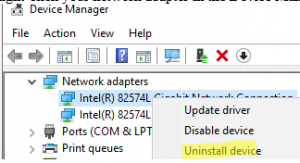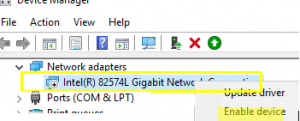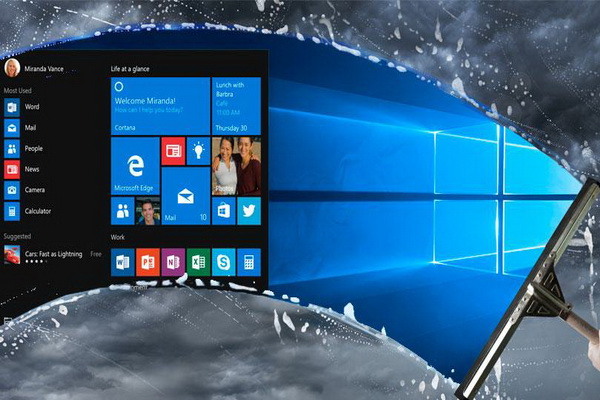Fix Network Adapter Not Detected in Windows 10
Fixed the problem of not displaying the network card in Windows
In this article, we tried to explain the common problems of not showing the network card in Windows.
This guide will help restore network connectivity on Windows 10/11 and Windows Server.
If you need a WordPress host, visit the Ded9.com site.
![]()
In this section, we examine the main reasons for not displaying the Windows network card:
- Network card drivers are not installed.
- The NIC drivers are installed incorrectly.
- There are no physical network cards on the computer or laptop, and they are not connected or damaged.
- Windows network stack failure
First, open the Device Manager (devmgmt. MSC) and make sure that the physical devices are in the Network Adapters section.
These devices can be Wi-Fi network cards (wireless) or Ethernet network cards (wired).
Note: Ignore the Wan Miniport virtual network card used for VPN connections.
If there are no devices in the Network Adapters section, but in the Other device section, you see all devices as Unknown or Network Controller with a yellow exclamation mark, try to identify the device type and install the appropriate driver. Maybe your network card is not connected.
Make sure that automatic driver updates are enabled in Windows.
Try an automatic driver search. Windows should detect the device and install the appropriate drivers.
If Windows cannot detect a device, you must detect it manually.
Find the VID and PID of the unknown device (Properties -> Details -> Hardware IDs). Copy the IDs and search in Google.
For example, PCI\VEN_14E4&DEV_43A0 is a Broadcom wireless network card. So, you can detect your NIC and download and install its driver.

If the list of network cards is empty and there are no unknown devices on your computer, search for devices in Device Manager (Action -> Scan for hardware changes).

Then check that your network card is connected to your computer/laptop and enabled in BIOS/UEFI settings. You may need to check your NIC on another computer (if possible) or check its operation at a service center (it may be broken).
If your network card shows up in Device Manager but not in Network Connections, try removing and reinstalling it.
To do this, follow the steps below:
1. Right-click on your network card in Device Manager and select Uninstall Device.

2. Activate Device discovery from Action -> Scan for hardware changes
3. Windows will find and install the most appropriate driver for your network card.
Note: If the problem persists, try downloading your network card driver from the vendor’s website and installing it manually.
Make sure the network card is enabled in Device Manager.
Disabled devices have an icon with a small downward arrow. Activate the device using the context menu.

If only wireless network cards are not displayed, ensure that the WLAN AutoConfig service is enabled. Check the service status with PowerShell:

If the service is disabled, enable it and change its startup type to automatic:
Set-Service WlanSvc –startup type automatic –passthrough Start-Service WlanSvc –PassThru
Note: You must manually enable the feature that supports Wi-Fi on Windows Server (by default, the wireless network component is disabled).
Open the network settings in the modern settings section (use the ms-settings: network URI command for quick access) and click Network Reset.

Now restart your system.
If none of these works, try the following suggested options:
If you have a third-party antivirus installed on your computer, try removing it.
Run the Windows Network Troubleshooter using the following command:
msdt.exe /id NetworkDiagnosticsNetworkAdapter
In this article, we solved possible problems for not displaying network cards in Windows. Good luck!











